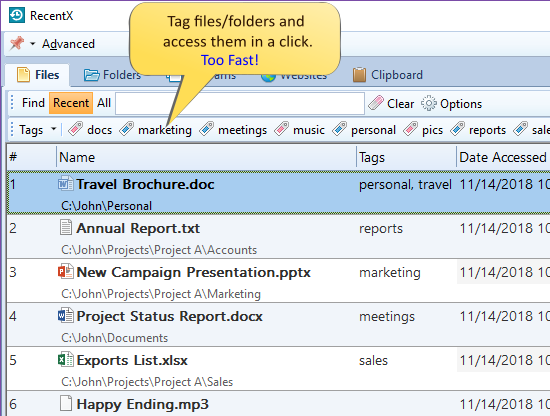

Create Tag Group - Opens the dialog for creating tag groups.This menu contains the following three menu items: This tag group is created automatically after the option for collecting tags is activated in tab General of the application settings.Īll the tag groups except the smart tag are optional and can be removed from the tag library if they are note needed. Collected Tags is a group for all other tags you have given to your files or folders that do not belong to any other group.With the yellow "rating" tags this problem can be easily solved, so your files can be organized in a rating-based system. As the * (asterix) character is considered a 'wildcard' on most file systems (meaning you cannot use it in filenames), giving a star rating as a filename-based tag would be somewhat difficult. Ratings are predefined star-rating tags with an identifiable yellow background.These are color coded tags that will be easily identifiable by a simple glance. Priorities are exactly what they seem.Predefined tags here are done, next, maybe and waiting.

Getting Things Done: Another useful category that can enhance your productivity, is an implementation of the GTD time management method.This can give you a general idea of the intended purpose of the group. Common Tags: This group contains two predefined tags, book, and paper.Learn more about smart tags in the tagging section Smart tags include various date based tags and geo location tagging.TagSpaces comes with a few pre-defined tag groups, which you can freely modify, delete, or expand upon. Tag groups make it easier to navigate, select and manage tags in the system. Tags are organized into tag groups, which are basically categories for tags with similar purpose and/or characteristics. The - or _ symbols can be used instead of spaces. The name of the tags should not contain spaces, \, / or #. A file can organically hold its own tags, as long as changing the filename is permittable. By default, tags are stored as part of the filename, which makes them easily transferable between file and operating systems, without any need to synchronize databases, or do any extra work. Tags are organic and integral parts of TagSpaces. The primary purpose of TagSpaces, is tagging files and organizing them. Every tag has its own three dot icon, which will open its context menu Tags (5) shows a special tag group used for automatically collecting new tags used in the application. Every tag group can be collapsed by clicking on the arrow icon in front of the tag group's name. On the top of (3) there is a three dot icon which will open the context menu of this tag group. The area marked with (3) represents a single tag group. The tag library has its own context menu, which can be started by clicking the three dot icon on right of (2). To open it, you need to click the button with the tag icon (1), in the vertical navigation placed on the most left part of the application. The tag library is the place where you can manage and organize the tags with which you can tag your files and folders.


 0 kommentar(er)
0 kommentar(er)
